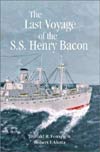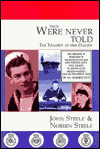The Loss of the Bismarck
Schofield, B.B.
1972, Ian Allan, London
ISBN 0870218409
96 pages, 34 photos, 6 charts
| Type. | General history |
| Pros. | First, solid, if brief and hurried use of Official Sources about Bismarck (see below). Several photos not seen since. |
| Cons. | Too brief and cursory for a serious historian. Limited narrative, though quite readable. Lapses in captioning, and some technical details. A lack of anecdote and colour. |
| Rating. |  |
Schofield's brief but solid volume sits in a peculiar position among the histories of the Bismarck operation. It was the first serious, if rather brief, account, for many years. He was a very good historian, enjoying a prominent position amongst writers of distinction and reliability. He was working in a period (1968-80) when the passage of time and the release of official sources made the reworking and publication of Second World War events both popular and important. Indeed this book is a member of a series, "Seabattles in Close Up #3". It was the first to be written after the change in regulations to the 30-Year Rule, and to be written after the release of the Official Sources for 1941, NOT Kennedy's Pursuit, in contrast to my earlier statement. Aside from that excellent book, Schofield's was also the last to be written about Bismarck without public knowledge of Ultra. Essentially, Schofield's account was a smooth, careful scholarly operational history, with some information about the ships and men. He began with a vital summation of the war at sea to date, as well as the key aspects of seapower in 1941. It however had little anecdotal material, nor very much narrative beyond the operational and technical facts.
Schofield's maps were solidly composed and detailed, if a little 'busy', and there were rather more than the standard number of unusual photographs. Many were standard poses but there were also others never seen before or since, though German pictures may have appeared in German books, but perhaps not in English translation. Chief among these are Fl.Off Michael Suckling's 'other' aerial recce photo, of Prinz Eugen in Kalvanes Bay, Hjeltefjord, an interesting inclusion compared to the almost universal use of the primary shot of Bismarck in Korsfjord. There are also a folded Arado 196 seaplane hangared, and a shot of a seaman taking a bearing, aboard Prinz Eugen. Another is a characteristically dour picture of RAdm. Wake-Walker RN photographed turning from paperwork at his desk. Lastly there are the standard images of the Battle of the Denmark Strait. These are, unsurprisingly, back to front, as Winklareth proved in 1998.
Unfortunately for such an authoritative historian, there are a number of lapses in captioning, as well as among the technical details listed at the end of the book. A shot of Bismarck, bows down, pulling alongside Prinz Eugen after sinking Hood in Denmark Strait is captioned "Bismarck under way after being crippled"! From whence could such an image have been taken, once no ships were in close contact and Prinz Eugen had been detached? Hood's details in the appendices include the 12x5.5" secondary guns removed in 1939-40, and not the 14x4" AA guns in twin mountings, only the earlier 4x4" open AA mountings. To be fair, both Müllenheim-Rechberg and Kennedy describe aircraft fittings and fuel tanks, which Hood had not mounted since the late 1930s. These cannot have contributed to the fire on boat deck or her loss. It is quite possible these were publisher's lapses, not Schofield's.
Schofield's place as the first to be published shows in both the brevity and the lack of originality and depth. The book gives the impression of having being hurriedly composed (if not researched) after an initial look at the sources, and being frogmarched, if not rushed, to print. It is true that Schofield was writing a deliberately short volume for a broad audience. It may be he also wanted to get in early with a book advertised perhaps as "the first to use the Official sources since Roskill" in 1954-61. Perhaps he felt there was little else that was authoritative or valuable, as against merely interesting, in the story. He was not known for his rich narrative or evocative descriptions of experiences compared to operations. His other works on the arctic convoys and articles on the defeat of the U-boat also show the same focus on the facts in preference to the story and the men. In any case, his work needs to be read in combination with other, more literary accounts to gain a full picture. Kennedy alone is not enough either.
The reviewer welcomes your comments on this review.
Review written by Ian Campbell, Launceston, Tasmania.
Published on 17 Aug 2001.
This title is highly recommended.
Return to our main review page.



